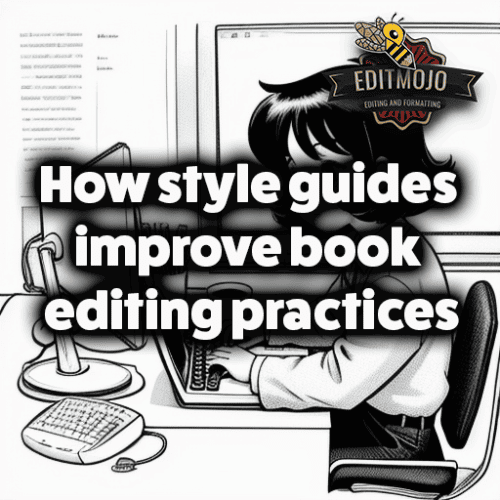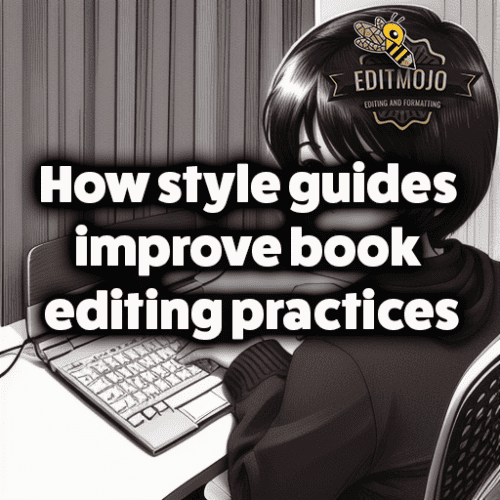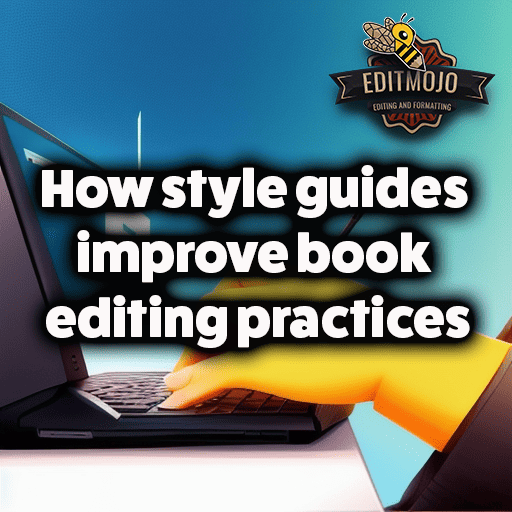How style guides improve book editing practices
How style guides improve book editing practices. Style guides are the unsung heroes of the editing world. Quietly, they shape our reading experiences by providing a framework for clarity and consistency in published works. These invisible hands guide authors and editors, enabling a universal understanding, eliminating ambiguities, and creating harmony within the written word. This article will explore how style guides significantly enhance book editing practices and ensure the credibility and professionalism of published works.
Key Takeaways
| Section | Key Points |
|---|---|
| Understanding the Basics of a Style Guide | Style guides provide standards for writing and design. They cover issues like grammar, punctuation, terminology, syntax, and citation styles. |
| The Role of Style Guides in Book Editing | Style guides provide structure and consistency to the editing process, acting as a roadmap for editors. |
| Advantages of Using Style Guides in Book Editing | Style guides enhance clarity, minimize errors, promote effective communication, and add a layer of professionalism to the work. |
| Different Style Guides for Different Genres | Different genres require different style guides. For example, a scientific journal might use APA, while a novel might use the Chicago Manual of Style or MLA. |
| The Future of Style Guides in Book Editing | Style guides are evolving to accommodate emerging trends and technologies, including digital publishing and AI. |
| Creating a Custom Style Guide for Your Book | For books with unique elements that standard style guides don’t cover, a custom style guide may be necessary. |
Understanding the Basics of a Style Guide
A style guide, in its essence, is a set of standards for writing and design of documents, be it for the general public or specific industries. It serves as a reference point, providing a framework that ensures uniformity in style and formatting.
Components of a Style Guide
Style guides are comprehensive rulebooks, addressing a range of issues from grammar and punctuation to terminology, syntax, and citation styles. They discuss matters like whether to use Oxford commas, how to format dates and numbers, when to capitalize words, and even specific industry terminology.

Types of Style Guides
There are several widely used style guides. For instance, the APA (American Psychological Association) style guide is often used in social sciences. The MLA (Modern Language Association) style guide is popular in the humanities, while the Chicago Manual of Style is a go-to for many publishers and writers.
The Role of Style Guides in Book Editing
Style guides and book editing go together like peanut butter and jelly. The relationship is deeply ingrained in the publishing process, shaping the way editors approach their craft.
The Connection Between Style Guides and Book Editing
A quick glance back into history reveals how style guides have significantly impacted book editing. It was the 19th-century explosion in print media that necessitated a standardization in language and style, leading to the creation of style guides. Since then, they have been aiding editors in ensuring that a manuscript aligns with the accepted standards.
How Style Guides Provide Structure to the Editing Process
The application of a style guide imparts structure to the editing process. It acts as a roadmap, guiding the editor in addressing issues of style, punctuation, and grammar. This systematic approach helps prevent oversights and maintain consistency throughout the manuscript.
Ensuring Uniformity and Consistency Through Style Guides
Imagine reading a book where the character’s name changes spelling halfway through, or the date format changes randomly. That would be jarring, right? Style guides safeguard against such inconsistencies, providing an all-encompassing rulebook that ensures uniformity throughout a work.

Balancing Creativity and Structure with Style Guides
Contrary to what some might think, style guides don’t restrict creativity. They merely provide a framework within which creativity can flourish without causing confusion or misunderstanding. It’s similar to how a trellis supports a climbing plant, allowing it to grow upwards while maintaining its form.
Advantages of Using Style Guides in Book Editing
Embracing style guides in book editing practices opens the door to numerous advantages. They enhance clarity, minimize errors, promote effective communication, and add a layer of professionalism to the work.
A notable example is the “Harry Potter” series, edited by Emma Matthewson and Barry Cunningham. The consistency in
the presentation of the magical world, from the spells to the terminology, would not have been possible without a strict adherence to a comprehensive style guide. This consistency made the fantastical elements believable and contributed significantly to the series’ success.
Different Style Guides for Different Genres
Just as a mystery novel differs from a scientific journal, so do the style guides that best suit them. Choosing the correct style guide for your book genre is crucial for its coherence and credibility.
The Importance of Choosing the Correct Style Guide for Your Book Genre
A scientific paper and a novel have vastly different goals and audiences, and thus require different approaches to style and formatting. Using APA for a scientific journal might be appropriate, while fiction might be better served with the Chicago Manual of Style or MLA.
The Future of Style Guides in Book Editing
Style guides are not static; they evolve to accommodate emerging trends and technologies.
Style Guides and Digital Publishing
As we move more towards digital publishing, style guides are adapting. For example, they now include guidelines on hyperlink usage, metadata, and even emojis!

The Impact of AI and Machine Learning on Style Guides and Editing
The emergence of AI and machine learning is also set to change the landscape. These technologies can aid in automatic adherence to style guides, making the editing process even more efficient.
Creating a Custom Style Guide for Your Book
Sometimes, a work may require a unique style guide. This can be particularly true for series or complex works that involve world-building.
When and Why to Create a Custom Style Guide
Creating a custom style guide may be necessary when a book has unique elements that standard style guides don’t cover. For instance, George R.R. Martin’s “A Song of Ice and Fire” series, with its plethora of characters, locales, and cultures, would benefit immensely from a custom style guide.
Steps to Create a Custom Style Guide
Creating a custom style guide involves identifying the unique elements of your work and establishing rules for their presentation and usage. Remember, the goal is still consistency and clarity.
Conclusion (How style guides improve book editing practices)
In a nutshell, style guides are the backbone of book editing. They create consistency, enhance communication, and uphold the credibility of the work. They are not here to limit creativity but to support it, creating a framework within which creativity can thrive.
As we move into the future, style guides will continue to evolve, embracing digital trends and potentially integrating AI and machine learning technologies. As writers and editors, we should continue to appreciate and utilize these valuable tools for their ability to create a seamless and professional reading experience.
Resources (How style guides improve book editing practices)
For further reading, here’s a list of essential style guides:
- APA (American Psychological Association)
- MLA (Modern Language Association)
- Chicago Manual of Style
- The New York Times Manual of Style and Usage
For tips on effectively using style guides, check out this guide. And for more in-depth discussions about style guides, [this book](https://www.amazon.com/Style-Guide-Peter-Stallworthy/dp/0571227057) offers a comprehensive look at their history and usage.
Top Five Questions and Answers Associated with This Keyword
- Q: Why are style guides important in book editing? A: Style guides are important in book editing because they provide a standard framework for style and formatting, ensuring consistency and clarity throughout the work. They also help promote effective communication and professionalism.
- Q: What are some examples of style guides? A: Examples of style guides include the APA (American Psychological Association) style guide, the MLA (Modern Language Association) style guide, and the Chicago Manual of Style.
- Q: Can you use different style guides for different book genres? A: Yes, different genres often require different style guides. For example, APA might be appropriate for a scientific journal, while fiction might be better served with the Chicago Manual of Style or MLA.
- Q: How are style guides evolving with digital publishing and AI? A: As digital publishing grows, style guides are adapting to include guidelines on elements like hyperlink usage, metadata, and even emojis. The emergence of AI and machine learning may also influence the way style guides are used, with potential for automated adherence to style guidelines.
- Q: When should you create a custom style guide for a book? A: Creating a custom style guide may be necessary when a book has unique elements that standard style guides don’t cover. This can be particularly useful for series or complex works that involve world-building.
